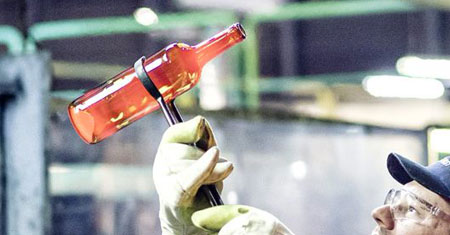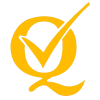Quality Assurance in Glass Bottle Manufacturing
In the glass bottle manufacturing industry, the absence of accurate and enforceable standards often leads to quality control issues. Many manufacturers rely heavily on the subjective opinions of workshop managers and packaging workers to assess product quality. This practice can result in inconsistent standards and the release of defective products into the market, ultimately harming the brand’s reputation and potentially compromising the safety of the end user’s product.

Our Quality Control Process
At our factory, we adhere to a rigorous and systematic quality control process to ensure the highest standards in every glass bottle we produce. Our dedicated Quality Control (QC) team conducts thorough inspections covering all aspects of production, including technical specifications, testing methods, inspection criteria, packaging, transportation, and storage.
Mold Temperature Control
During the initial two hours of production, we closely monitor the mold temperature. If the mold fails to reach the predetermined level, all glass bottles produced during this period are deemed unacceptable and discarded. While this practice may incur time and cost losses, it is crucial for maintaining product quality. Unfortunately, many factories neglect these stringent requirements, compromising product integrity.

In-Depth Inspection Process
Every glass bottle produced in our factory undergoes a comprehensive inspection process, beginning with a visual assessment by the workshop director. The bottle’s weight and capacity are measured with precision, and any substandard products are promptly removed from the production line. We prioritize accuracy in capacity and size measurements, ensuring that any deviations remain within the tolerance range specified in our technical drawings.
Following the initial inspection, the bottles undergo a two-hour annealing and cooling process to test their ability to withstand temperature changes. This demanding test requires a spacious workshop, which many smaller manufacturers lack, making it difficult for them to achieve the same level of quality and durability.

Advanced X-Ray Inspection
After annealing, our glass bottles are subjected to X-ray inspection, which allows us to quickly detect any defects such as small breakpoints (less than 3mm), cracks, air bubbles, deviations in diameter, refractive power, surface flatness, thickness, and cleanliness. This advanced technology streamlines the inspection process while ensuring that our products meet stringent hygiene standards. Our testing verifies that the levels of lead, cadmium, arsenic, and antimony in the glass bottles comply with the strict requirements set by GB 19778, a level of scrutiny often overlooked by other manufacturers.

Final Quality Checks and Packaging
Once the glass bottles pass the X-ray inspection, they undergo further cooling until their temperature reaches approximately 40 degrees Celsius. Our QC team conducts random checks on the bottle’s capacity to ensure it meets the desired specifications. A matching lid is then placed, and the seal is tested to confirm its integrity.
Defective bottles that fail to meet our rigorous standards are discarded, while those that pass are carefully packaged according to the customer’s specifications, whether in cartons, sacks, or pallets. For additional protection, bottles may be wrapped in plastic film as inner packaging.
Before delivery, the outer packaging is inspected for stability and damage, with precautions taken to prevent excessive vibrations during transportation. Our professional warehousing procedures ensure the safe storage of products, protecting them from moisture, fire, and theft prior to delivery.
For a seamless purchasing experience and guaranteed quality, please contact us.

